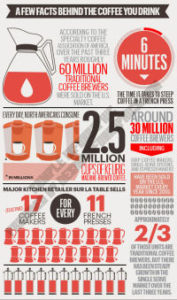Content marketing has become increasingly popular in recent years, but it’s important to distinguish it from traditional marketing tactics. Consumers deserve to know the truth behind the techniques that businesses use to sell their products. As a business owner, it’s important to choose products that are truly beneficial to your customers and not just focused on making a quick profit. In the long run, prioritizing the needs and desires of your audience will set your brand apart and establish a loyal customer base. By understanding effective marketing strategies and avoiding unethical tactics, your small business can thrive and stand out in a competitive marketplace.
What is the difference between Content and Traditional Marketing?
Definitions of Digital Content Marketing and Traditional Marketing
Traditional Marketing
- Traditional Marketing is something we see, use, and hear each and every day. Common traditional marketing strategies can be found to include direct mail, broadcast (Radio & TV), Telephone solicitation, and Print Marketing.
- Direct Mail – First utilized in 1888, direct mail was the use of printed material (postcards, sales letters, Christmas catalogs, coupon mailers) being mailed out to prospective customers.
- Broadcast (Radio & TV) – This, of course, should bring up memories of Saturday morning cartoon commercials on TV; or maybe some sponsored or branded radio ad. Broadcast marketing has been around since the early 1920s.
- Radio Advertisement – Very first radio commercial was by AT&T in 1922 on WEAF (New York Radio Station) Source: https://www.npr.org/
- TV Commercial – The world’s first ‘legal’ TV commercial was aired on 7-1-1941 on NBC’s WNBT-TV. It was shown at the beginning of a baseball game between the Brooklyn Dodgers and the Philadelphia Phillies for Bulova watches. BTW Phillies won 12 to 8 | WP: Ike Pearson | LP: Hugh Casey – Source
- NOTE: Reason for putting in ‘LEGAL’ – before 1941 networks were not allowed to charge for advertisements and anything before 7-1-1941 was considered experimental.
- Telephone Solicitations (Telemarketing / Telephone Marketing) – It is a method of solicitation (delivering a sales pitch) over the phone to convince prospective buyers to buy a service or product by a telemarketer.
- Telemarketing Solicitation Laws – Telemarketers cannot call you prior to 8 am or after 9 pm and must promptly inform you who they are (ie business name or charity). Source: FTC Consumer Information
- Print Marketing – Definitely one of the oldest forms of Traditional Marketing. Print marketing is defined as an advertisement in the form of a Flyer, Poster, Newspaper, Magazine, and etc. (ie in the printed paper form).
- The first evidence of Print Marketing can be traced back to the ancient Egyptians who used papyrus to convey sales messages and wall posters. Source: Wikipedia
Digital Content Marketing
- Digital Content Marketing is advertisements consumed via a digital means or source. Common digital Content Marketing is to include Blogs, Videos, Infographics, Case Studies, eBooks, Memes, and various PPC or Online Ads. Here are
- Articles and Blogs – informational writings covering keyword-specific topics or topics of special interest.
- Videos – Similar to TV, but this expands upon traditional broadcasting to include User-generated videos from YouTube, Vine, &, etc. These videos are short productions typically only found online or via some type of mobile application.
- Infographics – a picture or graphic that is a summary of a particular topic or theme. This could be a beginner’s guide to wine (See Infographic Sample – by WineInvestment.com).
- Case Studies – are a useful means to provide an-in depth to a market plan, product performance, and even market projects.
- eBooks – can be created to convey an idea, or theory, or simply be a way to create a multi-page advertisement for your business. (I would also add the following to this category):
- Whitepapers – A lot of people do not consider these as ebooks as they tend to have more information and are filled with statistical data instead of personal opinions.
- How-To Guides – Share some type of skill, instructional guide, or even some type of online cheat codes for the latest game.
- Checklists – Offer the top 10 items needed for emergency preparedness; Buying a New Car Checklist, and thousands of valuable concepts for your clientele.
- Memes – an image created with a theme or to convey an idea regarding your company or product. Many times Memes are culturally relevant for the times.
- PPC (Online Ads) – Advertisements that run online from familiar social platforms such as Facebook, YouTube, Google Adwords, Bing, and Yahoo.
So in this article, I will cover a few basics, starting off with a brief overview; of common advertisement methods; discussing why content marketing is better; the different types of Marketing: Infographics, Blog Posts, Podcasts, Case Studies, and Online Videos. Just the link(s) or simply scroll down to the particular section which piques your interest.
Marketing vs. Advertising – The Overview
Understanding the fundamental vocabulary of the marketing world is crucial for implementing a successful marketing strategy. Marketing is a broad term that encompasses all activities involved in the sale or purchase of products, including advertising, freight transport, and storage of goods. However, for consumers and business owners, marketing often refers to the promotion of a product or service.
 Traditional marketing, which focuses on direct advertising from the company to the consumer, is slowly becoming less effective. Television ads, magazine and newspaper ads, and banner ads on websites are often ignored by consumers. This shift in consumer behavior has led to the rise of content marketing.
Traditional marketing, which focuses on direct advertising from the company to the consumer, is slowly becoming less effective. Television ads, magazine and newspaper ads, and banner ads on websites are often ignored by consumers. This shift in consumer behavior has led to the rise of content marketing.
Content marketing is a strategy that provides valuable information and material to consumers that they can use beyond their decision to purchase a product or service. Rather than solely promoting a product or service, content marketing aims to educate and engage consumers. For example, instead of simply promoting the benefits of a cup of yogurt, a yogurt company using content marketing could produce a brochure highlighting the health benefits of all types of yogurt. This valuable information focuses on the overall well-being of consumers and not just the sale of a specific product.
By providing valuable content, businesses can establish themselves as experts in their industry and build trust with their target audience. Content marketing can take many forms, including blog articles, infographics, videos, and social media posts.
Traditional marketing is becoming less effective, and businesses need to embrace content marketing to reach and engage their target audience effectively. Providing valuable content is key to building a successful marketing strategy that establishes trust and authority in your industry.
Why Is Content Marketing Better?
In today’s world, consumers are bombarded with traditional ads that are often intrusive and uninvited. As a result, many consumers have developed a natural ability to ignore these ads. However, content marketing is different. It connects the consumer to the provider by offering valuable and informative content. This makes the consumer feel that the company is really concerned about their well-being, which in turn encourages them to buy from that company.
But why is content marketing usually more effective than traditional marketing? One reason is that it helps consumers understand the value of a product in a less intrusive way. By providing useful information, content marketing can help consumers make informed decisions and feel more confident about their purchases.
For example, let’s take the case of yogurt. If a consumer knows how good yogurt is for their health, they will be more likely to buy a cup of yogurt. Content marketing can help consumers understand the benefits of yogurt for health in a non-intrusive way, which can lead to more sales for the company.
In summary, content marketing is more effective than traditional marketing because it establishes a connection between the consumer and the provider and offers useful information that can help consumers make informed decisions
Blog Posts & Articles
In the early days of the internet, websites were hand-coded using HTML. As database languages like PHP and ColdFusion were developed, the internet became more dynamic. With the emergence of WordPress, entrepreneurs realized the potential of earning money through blogging. By combining blogging with SEO, they were able to capture traffic via concise keyword topics. The internet experienced a content explosion, and the era of Content Marketing was born.
However, there is a misconception that blogs and articles are the same, and the terms are often used interchangeably. While there are similarities, there are also significant differences that need to be defined and distinguished. Blogging allows for more personal and opinionated content, while articles are more formal and informative. Blogging also allows for interaction with readers, creating a community and building a loyal following. On the other hand, articles are more suitable for presenting detailed information or news in a straightforward manner.
Overall, the emergence of blogging and content marketing has revolutionized the way businesses approach their online presence. It has given entrepreneurs a powerful tool to connect with their audience, build their brand, and drive traffic to their websites. By understanding the differences between blogs and articles, businesses can create content that effectively communicates their message and resonates with their target audience.
Difference Between Blog and Article by Schema
Now you will find lots of different opinions on the proposed differences between Blogs and Articles; however, I would like to toss in one last theory as subtly suggested by Google and the other major search platforms. Back in 2011 (although W3.ORG shows definition as from 2001 – URL Path | Schema v2.0 as of 5-13-2015), a majority of the biggest search engines (Bing, Google, Yahoo, & Yandex) came together to create what many developers know as SCHEMA (Structured Data / Microdata Syntax). Schema became an agreed-upon markup that allowed web developers to provide information in a unified format (single set of vocabulary) to all search engines. Schema has a clear definition that includes People, Places, Events, Products, and others totaling over 630+ classes and 986+ relations. Two of those definitions TYPES are ‘Article’ and ‘Blog’. Below is the definition of both:
- Article (Type) – An article, such as a news article or piece of an investigative report. Newspapers and magazines have articles of many different types and this is intended to cover them all.
- As of 2017, the term (as stated by schema.org) for news-related content is a ‘NewsArticle’. An ‘Article’ or ‘NewsArticles’ (often described as) is to be defined as a NewsArticle even if contains inaccuracies… or diverges from journalistic best practices (Hmmmm False News?). ‘ReportageNewsArticle’ is more representative defined as a more restricted sense corresponding to journalistic best practices. ‘NewsArticles’ include various kinds of best practices that explicitly indicate a set of some sort of standards, policies, and transparency that a news source has adopted… (Source: https://schema.org/docs/news.html)
- Blog (Type) – A blog post
So a quick look from the two definitions above shows that SCHEMA has put a lot of emphasis on defining the Article TYPE whereas the contrary is evident for Blog. As I did mention, the subtle definition can be inferred that Blog covers everything else that is not defined under the Article and takes a less formal or non-journalistic approach to writing (ie opinion based not fact-based).
Difference Between Blog and Article by Cambridge Dictionary
The following definitions (and source) for ‘Article’ and ‘Blog’ are provided by Cambridge Dictionary (website: https://dictionary.cambridge.org/us/)
- article – noun /ˈɑrt̬·ɪ·kəl/ – a piece of writing on a particular subject in a newspaper or magazine…
- blog – noun /blog, blag/ – a website on which one person or group puts new information regularly, often every day…
What Is An Article?
An article is a comprehensive piece of writing that aims to provide an in-depth explanation of a particular topic, usually from the perspective of an expert in the field (such as a journalist or researcher). Articles are typically created to showcase the author’s writing and research skills and are often structured, objective, and thoroughly researched to ensure the inclusion of verifiable information (such as an ISSN, an 8-digit identification number used for newspapers, journals, and other publications).
Moreover, an article should be written in clear and concise language and may include source information or quotes from authoritative figures. While the author’s opinion on the topic may not be immediately apparent and is not typically directed toward the reader, articles are usually written in the third person to maintain an objective tone. Writing an article requires significant effort, research, and attention to detail, and can serve as a valuable tool for educating and informing readers on a wide range of topics.
What Is A Blog or Blog Post?
A blog post is a concise and informal form of writing that aims to provide readers with valuable information on a particular subject. Unlike articles, blog posts are typically more conversational and opinionated, encouraging reader engagement through comments and reactions. Blog posts usually focus on a single topic, but may include multiple perspectives to broaden readers’ understanding. Moreover, blog posts are an excellent way to showcase the blogger’s personality and give readers a glimpse into their business or events.
 Articles, on the other hand, can vary in length and are designed for leisurely reading. They are typically more formal in tone and written to convey authoritative information, supported by thorough research. Articles are great for information-sharing and news dissemination, but may not be the best fit for advertising and marketing purposes, as they may come across as too formal and less relatable.
Articles, on the other hand, can vary in length and are designed for leisurely reading. They are typically more formal in tone and written to convey authoritative information, supported by thorough research. Articles are great for information-sharing and news dissemination, but may not be the best fit for advertising and marketing purposes, as they may come across as too formal and less relatable.
Both blog posts and articles can be used to generate income, but there is a distinct difference between the two. Blog posts are ideal for those looking to make money off a blog, as they are easy to create and can be used to promote products or services through advertising, sponsorships, affiliate programs, and sales. Articles, on the other hand, are better suited for information-sharing and establishing credibility and authority in a particular field.
While there can be some overlap between blog posts and articles, it is essential to make a clear distinction between the two. This distinction ultimately depends on the definition given by the person using the terms. Some websites find it valuable to use the terms to differentiate the types of content they offer, whether for internal purposes or to share with their target audience.
Content Marketing – Infographics
 Infographics have emerged as a widely popular and effective tool for online communication. Essentially, an infographic refers to the visual representation of information or data. While graphics have been used for centuries, the advent of online tools has made the creation and utilization of infographics more accessible than ever before. These engaging and attractive graphics can be utilized in online presentations and reports, replacing the need for tedious explanations and lengthy written descriptions.
Infographics have emerged as a widely popular and effective tool for online communication. Essentially, an infographic refers to the visual representation of information or data. While graphics have been used for centuries, the advent of online tools has made the creation and utilization of infographics more accessible than ever before. These engaging and attractive graphics can be utilized in online presentations and reports, replacing the need for tedious explanations and lengthy written descriptions.
By incorporating infographics into annual reports, businesses can attract and engage their employees while also streamlining the data visualization process. In research reports, an easy-to-understand and visually appealing infographic design can significantly improve the presentation of results. Instead of expending valuable time and energy explaining each breakthrough, the data can be presented as a clear and concise graph or chart.
Given the fierce competition in the marketing and advertising industry, companies across the globe have recognized the importance of incorporating infographics into their strategies to make an impact on consumers. When compared to plain text, infographics are a more effective and captivating way of conveying information. Infographics can be utilized at any time to make presentations and information more interesting and easily understandable. In short, infographics are a versatile and powerful tool that can be used to improve the efficiency and effectiveness of any communication.
- Improved Content Attractiveness: Simple text that spans the entire page requires time and attention, which can keep many people away. However, graphics clearly present the information without you having to spend time reading.
- Easy representation of statistical data: facts and figures increase the credibility factor and are therefore added strategically to raise public awareness of the reliability of the information. Reading the numbers may seem very tiring, but the graphical representation can make it easier to visualize data with the same data in a more understandable way.
Case Studies
Case studies can be a powerful tool to promote your products or services by showcasing your success stories. By providing a one to a five-page summary of how your company’s offerings helped solve a customer’s problem, you can demonstrate the effectiveness of your solutions.
These stories are particularly valuable for potential customers who are eager to learn more about your offerings and how they can help address their own challenges. By providing real-world examples of successful implementations, you can prove the value of your products or services and increase the likelihood that potential customers will choose to do business with you.
To make the most of your case studies, it’s important to take a reader-centric approach when crafting your narrative. By putting yourself in the shoes of your potential customer, you can focus on their needs and interests, and highlight the specific benefits that your offerings can provide. By doing so, you can make your case studies more compelling and persuasive, and increase their effectiveness as a sales tool.
Content Marketing – Podcast
The trend of podcasting has captured the attention of many people who have started as listeners and eventually ask themselves, “What could be my podcast about?” Although creating a podcast is not a complex task, it is crucial to make the right decisions from the beginning.
 Most podcasters opt to podcast about their hobbies and interests, which they are deeply passionate about. However, sometimes the niche chosen by the podcaster may not attract enough listeners, which could make it challenging to monetize the podcast.
Most podcasters opt to podcast about their hobbies and interests, which they are deeply passionate about. However, sometimes the niche chosen by the podcaster may not attract enough listeners, which could make it challenging to monetize the podcast.
To avoid the pitfall of pod fading, it is important to choose a podcast topic that genuinely interests you. Some podcasters may choose a niche that has a high potential for revenue, such as health or finance. However, if making money is your sole motivation, the lack of interest in the topic may lead to losing passion for creating episodes and ultimately pod fading.
Pod fading occurs when podcasters lose interest in their topic and decide to quit their podcasts, leaving their listeners hanging. It is important to note that even if the niche has the potential to generate a large income, it is essential to remain passionate about it. This ensures that creating new episodes is not a burden but an enjoyable experience.
Online Videos
Marketing has undergone significant transformations in recent years, and while some traditional techniques still remain effective, advancements in technology have opened up new avenues for businesses to explore. One such development is online video marketing.
 As a business owner, your goal is to attract more traffic to your website using various marketing strategies. However, before diving in, it’s important to conduct research and plan thoroughly to ensure that the strategy you choose is aligned with your business model. If you decide that video marketing is worth exploring, you’ll discover that it can be a powerful tool for your marketing efforts, offering numerous benefits.
As a business owner, your goal is to attract more traffic to your website using various marketing strategies. However, before diving in, it’s important to conduct research and plan thoroughly to ensure that the strategy you choose is aligned with your business model. If you decide that video marketing is worth exploring, you’ll discover that it can be a powerful tool for your marketing efforts, offering numerous benefits.
Investing time and resources into creating a video can yield long-term benefits for your business. A well-made video can work tirelessly, 24/7, every day of the year. This means that the small investment you make in creating a video can pay off for years to come. When you consider the bigger picture, it’s easy to see why video marketing is so valuable for businesses. It is also one of the most cost-effective ways to market your business, especially when compared to traditional print advertising which has a shorter lifespan, particularly in today’s digital age. With print advertising, it can be difficult to determine how your audience is finding you.
However, with online video, you can track your viewers’ location, the number of people watching your video, and the time they spend watching it. This level of detailed information is incredibly useful and allows you to fine-tune your video content for maximum effectiveness. By gaining a deeper understanding of your audience, you can tailor your videos to better engage with them and drive more traffic to your website. In this way, the benefits of video marketing are clear and can significantly boost your online marketing efforts.




